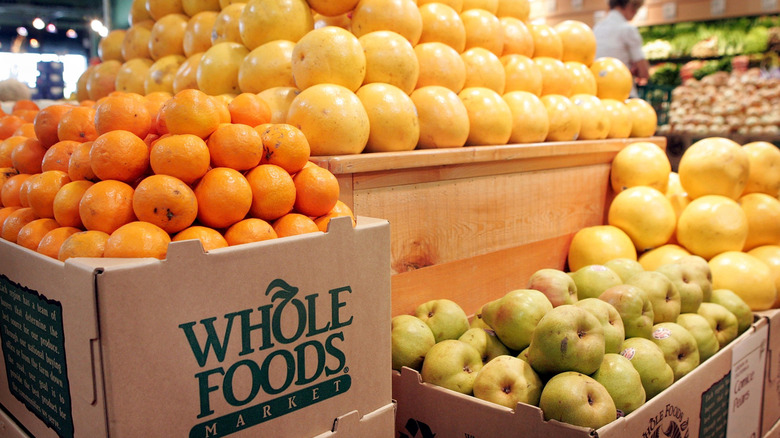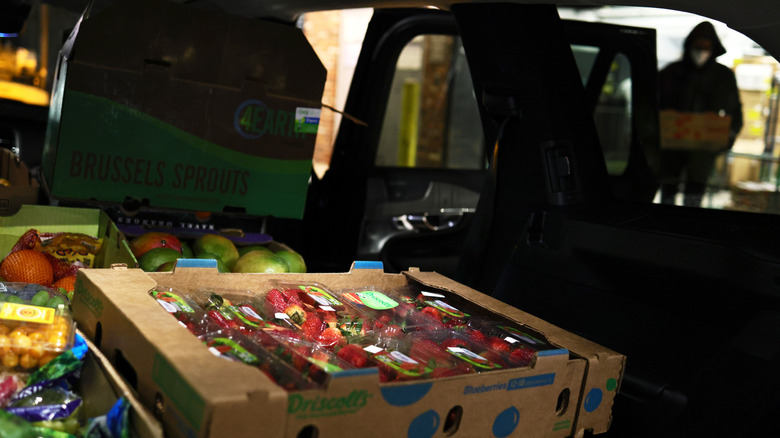This Is What Whole Foods Market Does With Its Leftover Food
Americans generate an almost unbelievable 92 billion pounds of food waste each year. For context, that's equivalent to the weight of 230,000 of the largest blue whales in existence. (Doesn't make it much more conceivable, does it?) This can have some pretty devastating consequences, economically, environmentally, and ethically speaking. So, some companies in the food sphere do their part to try to reduce that impact. For example, Whole Foods has several sustainable methods for repurposing its leftover food supply.
Similar to what Aldi does with its leftover food supply, Whole Foods donates much of its unsold produce to local hunger relief organizations. In 2020, Whole Foods partnered with an organization called Food Donation Connection to launch a program called Nourishing our Neighborhoods. Per the arrangement, Whole Foods donates food that would otherwise be thrown away but is still safe to eat. Food Donation Connection then distributes the food to local hunger relief agencies. Between 2020 and 2022, Whole Foods even donated the funds to purchase 32 refrigerated delivery vans in order to make transporting the food easier. Some local agencies like Second Helpings and Food Not Bombs arrange to independently pick up potential food waste straight from the grocer to repurpose it and get it out into the community.
Supporting local community
In 2024, a concept similar to the one used to create Nourishing our Neighborhoods was introduced on a more individual level. Whole Foods teamed up with the social impact group Too Good To Go, which helps link folks looking for food with businesses looking to get rid of surplus in a sustainable way. The program allows people to use an app to buy surprise bags of the store's prepared food or bakery items for a discounted price.
There's another way the specialty grocer utilizes unsold goods, and it acts as a remedy for the issue surrounding "ugly food." People disconnected from growing food may hold the opinion that food is only edible if it looks perfect. This has led to Americans throwing out 20 billion pounds of edible food annually. In response to this outrageous waste, online grocers like Misfits Market emerged, selling this ugly food to shoppers who still see value in it. In a similar fashion, Whole Foods buys cosmetically flawed produce that wouldn't typically sell on the grocery store floor and uses it to whip up its tasty prepared meals. The grocery store chain will also pull items that aren't selling as well from its own stock and use them the same way.
If repurposing or donation isn't an option, the food is ground up on-site using a special, industrial-strength food grinder called Grind2Energy. The slurry is then processed by facilities that can convert the resulting gas into energy.

